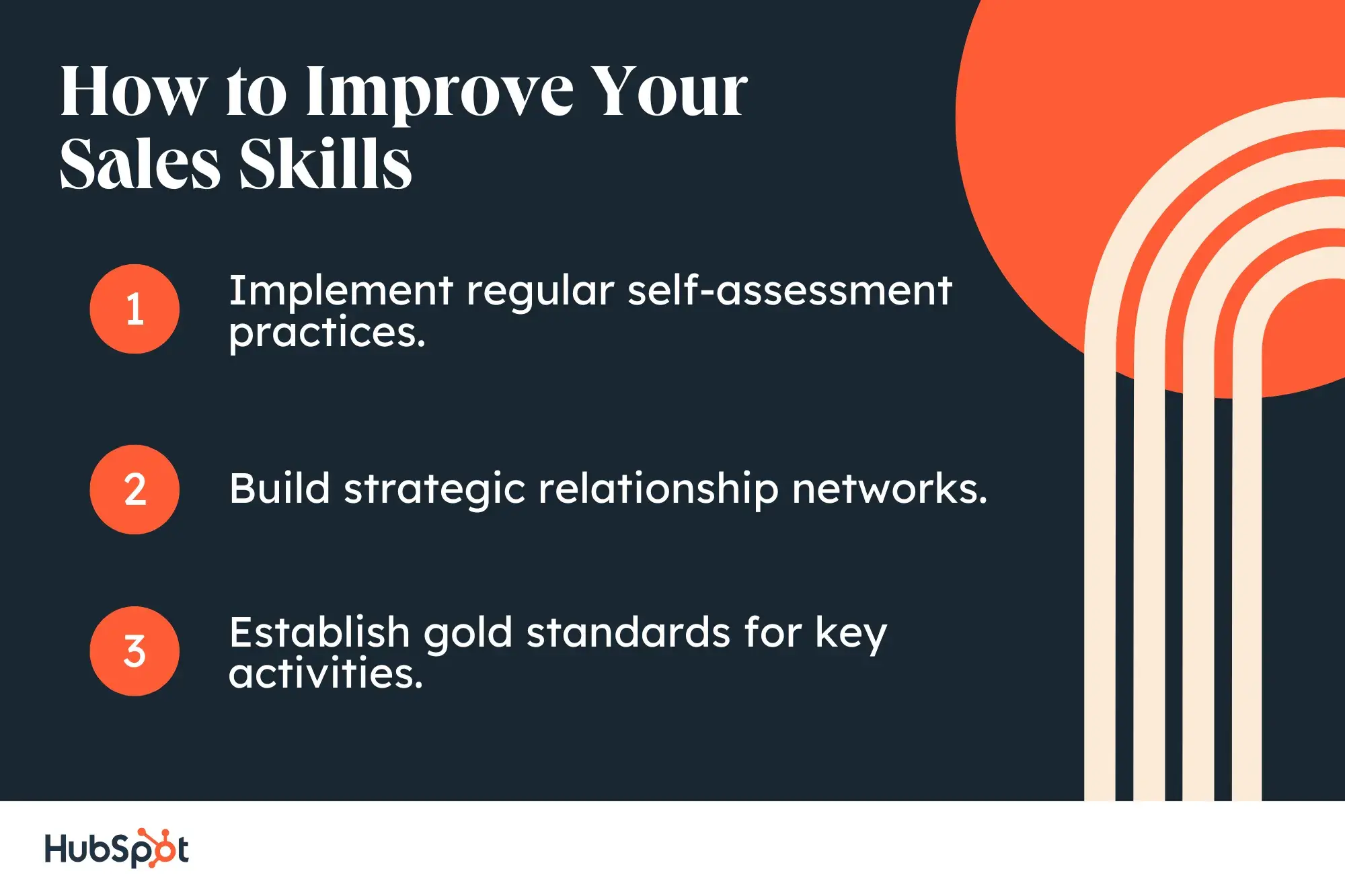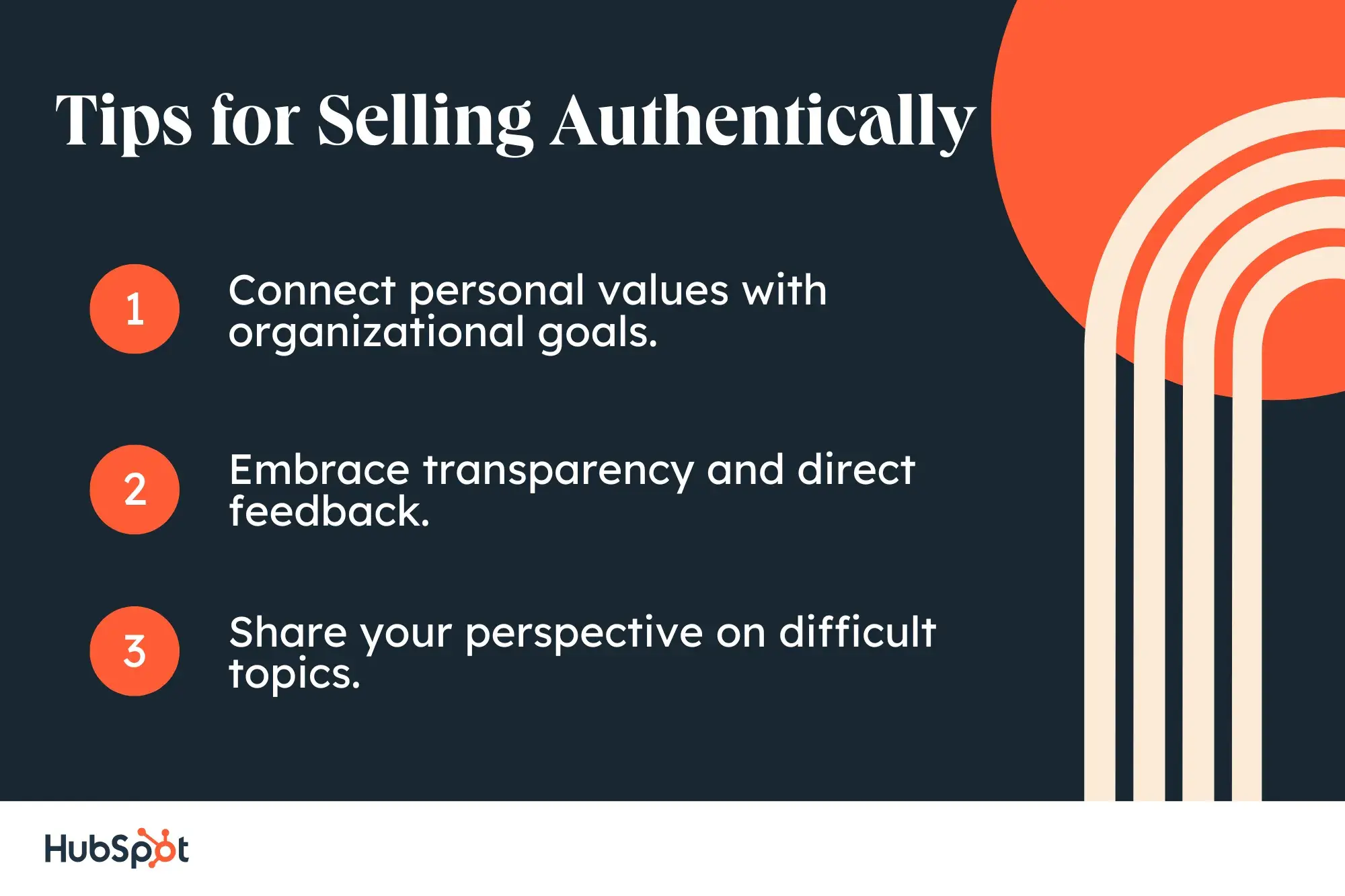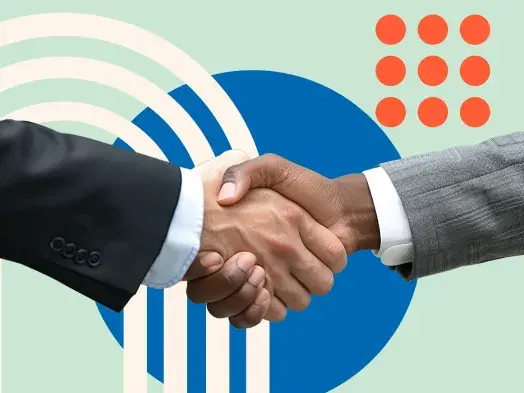Some sales managers hit their targets. Others build teams that consistently outperform, year after year. What makes the difference?
To find out, I spoke with top sales leaders, combed through expert interviews, and listened to hours of podcasts on leadership and performance. The best sales managers don’t just focus on hitting numbers — they build engaged, motivated, and constantly improving teams. They know how to develop talent, navigate challenges, and create a culture where people want to win.
In this piece, I’ll break down the key traits that separate good sales managers from truly exceptional leaders. These insights come straight from the experts, and they might just change the way you think about leading a team.
Table of Contents
- 5 Essential Sales Personality Traits
- How to Improve Your Sales Skills
- Tips for Selling Authentically
- Measure Leadership Impact Beyond Sales Numbers
5 Essential Sales Personality Traits

When I conducted my research and spoke to experts, I noticed something curious: the most successful leaders shared specific traits that had nothing to do with sales techniques. These five characteristics showed up repeatedly in how they handled problems, developed their people, and approached everyday decisions.
1. Coaching Mindset and Developmental Focus
This mindset prioritizes genuine development over basic metrics tracking.
According to Forrester's Winter Sales Survey (2022), 62% of sales professionals in B2B organizations report that feedback and coaching from their first-line managers is effective and improves performance.
When coaching is done right — by focusing on skill development rather than just number monitoring — it directly impacts sales success. Instead of merely reviewing KPIs, high-performing managers take the time to guide reps through challenging objections, role-play difficult conversations, and offer constructive, real-time feedback.
If coaching isn't translating into measurable improvement, it may not be coaching at all — it may just be oversight.
In a recent sales podcast, sales leadership expert Shane Gibson highlighted a common misconception. Many managers believe they‘re coaching when they’re actually just monitoring numbers.
"My goal is to really get out from behind the dashboard,” he said.
“Too many sales leaders say, ‘Are you coaching people on your team?’ ‘Oh, yeah, I am.’ Then, I sit on one of their coaching sessions, and they‘re just reviewing metrics. That’s not coaching, that's compliance," explains Gibson.
The distinction matters because reviewing metrics alone doesn’t make reps better. Real coaching pinpoints exact skill gaps — like weak objection handling — shows stronger approaches, and reinforces them with hands-on practice.
Later, in the same podcast discussion about building high-performance sales teams, Gibson elaborated on what good coaching entails:
“You need to add generative coaching, skills development, and deal-specific development to the mix if you're really going to improve and grow the bench strength of your sales team.”
This requires blocking dedicated time for role-playing difficult calls, reviewing call recordings together, and creating personalized development plans for each team member.

Free Sales Plan Template
Outline your company's sales strategy in one simple, coherent sales plan.
- Target Market
- Prospecting Strategy
- Budget
- Goals
Download Free
All fields are required.

2. Authentic Leadership and Vulnerability
Your team won’t follow who you pretend to be. They follow who you really are.
Too many sales managers try to project unshakable confidence, thinking it’s the key to leadership. But real leadership isn’t about having all the answers — it’s about being honest, adaptable, and showing up as your true self.
Our 2024 Sales Trends Report shows that 24% of high-performing sales teams highly rank the importance of building a culture of trust among reps, compared to only 13% of underperforming teams.
Top-performing teams actively cultivate an environment where authenticity, transparency, and trust are prioritized.
“Authentic leadership is the antithesis of imposter syndrome, in my opinion and experience,” says leadership coach Markus Neukom in the Sales Gravy podcast. “I help my clients empower themselves, and once they're empowered, guess what? They can start empowering their people.”
This self-assurance allows leaders to show vulnerability rather than projecting false perfection. But how do you actually practice that?
Start by leading with transparency. In your next team meeting, openly share a challenge you’re facing and how you're approaching it. When a deal falls through, instead of deflecting, break down what could have been done differently.
Neukom reinforces this: “You have to dare to be vulnerable. That's what I basically said to that management team. You have to learn that vulnerability is the key.”
Vulnerability isn’t weakness — it’s a way to build trust. When leaders admit mistakes and limitations, team members feel safe doing the same.
3. Emotional Intelligence and Active Listening
Most sales leaders think they listen. Few actually do.
In tough coaching conversations, it‘s easy to start creating a response before the other person has even finished speaking. That’s not listening — that's waiting for your turn to talk. “Observe, ask questions, learn to listen,” says Neukom. “When you get those two people in a room, and you ask questions, and you let them speak, half of the solution is already there.”
But active listening is more than nodding along. It means paying attention to tone, hesitation, and what isn‘t being said. "Really listening is an art of emotional intelligence," Neukom explains. "It’s literally being open, focused on the other person, and here with all five senses."
According to Jacob Wickett, Founder of Live Digital, a SaaS recruitment agency, “The strongest closers don't just talk well; they listen well. They pick up on subtle buying signals and tailor their pitch accordingly.”
As a sales leader, this isn‘t just a skill to practice personally — it’s a cornerstone capability to develop in your team.
Try this in your next 1:1: After a rep shares a challenge, pause for three full seconds before responding. If they don't add anything, ask, “And what else?” This forces you to stay present — and gives them space to share what they were really thinking.
4. Adaptability and Willingness to Change
New hires bring different expectations, industries shift, and buyers approach decisions differently than they did even a few years ago. A leadership style that worked in the past can quickly become outdated.
Markus Neukom has seen this firsthand.
“The question is not if. The question is when you have to adapt your leadership style,” he says. “In this room of 24 management team members, you already have 1/3 of Generation Y, and they ask you, 'Why?'”
Leaders who struggle with adaptability often see change as a disruption. But those who embrace it recognize it as an advantage. When a team starts questioning the why behind decisions, that‘s not resistance — that’s engagement. Instead of shutting it down, turn it into a conversation.
This evolution extends beyond team management to the entire sales landscape.
“The industry is going through rapid changes, both when it comes to AI, prospect habits, and geopolitical factors that influence the market,” explains Mia Falls, Sales Development Representative from proposal platform Qwilr.
“It's important to stay up to date and adapt to this month's needs instead of relying on a yearly plan. In the past, sales has been like the misinterpretation of 'survival of the fittest'. Those with the thickest skin and biggest bite got ahead. Nowadays, the actual meaning of Darwin's phrase is true — those who are the most adaptable win.”
If you‘re leading the same way you did five years ago, it’s time to rethink your approach. Instead of giving instructions, ask your reps how they‘d solve a problem. Their response may point out hidden strengths, fresh perspectives, or gaps you didn’t know existed.

Free Sales Plan Template
Outline your company's sales strategy in one simple, coherent sales plan.
- Target Market
- Prospecting Strategy
- Budget
- Goals
Download Free
All fields are required.

5. Strategic Vision and Effective Communication
A sales leader without a clear vision is like a team running plays with no strategy — disorganized, reactive, and unlikely to win. A strong vision shows up in daily decisions, team goals, and how leaders communicate priorities.
“90% of achieving any goals is knowing why, and 90% of getting your salespeople to shift their behaviors or implement new disciplines is often about effectively communicating the why,” says Shane Gibson in his sales podcast.
Telling your team what to do isn’t enough. If they don’t understand why it matters, they’ll resist, disengage, or go through the motions without real commitment. People don’t buy into change unless they see how it benefits them.
Gibson emphasizes this: “Are you inspired by it? If you‘re going to communicate your organizational sales vision or a major initiative, you’re the first person who has to buy into it, and have you connected it to their individual needs?”
Before your next team meeting, ask yourself: Would I be excited to hear this? If not, sharpen your message. Show them how the vision fuels their success — how it impacts their targets, growth, and daily work. If they see the value, they’ll own it.
How to Improve Your Sales Skills

Identifying what makes great sales leaders is just the first step — you need practical ways to build those capabilities in yourself and your team. The approaches below have helped sales professionals at every level sharpen their skills and deliver better results.
Each focuses on specific actions you can take this week, not vague suggestions that sound good but rarely translate to real improvement.
Implement regular self-assessment practices.
Day-to-day targets pile up, and it's easy to assume experience alone drives improvement. Without regular self-reflection, small mistakes turn into bad habits, missed opportunities compound, and performance flatlines.
Self-assessment practices like structured reflection, peer feedback, and skill tracking help you improve your weaknesses and hone your strengths.
Our research found that 17% of high-performing sales teams highly rank the importance of making performance data available, compared to only 11% of underperforming teams. The ability to measure, track, and analyze performance transparently makes it easier to identify trends, correct weaknesses, and double down on successful strategies.
“Great leaders are great students. They're highly coachable. They have coaches themselves. They seek mentors for growth in many aspects of their lives, and people want to follow people who are moving somewhere,” says Gibson.
Mia Falls recommends extending this practice across the team:
“Listening to the recordings of successful AE calls every week really helps you understand the product and customers on a deeper level. I'd also recommend finding a tracking system for positive prospect interactions that feels intuitive and works for you. Then, consult it frequently and learn from it. This helps me approach every month with new insights.”
By making these review sessions a regular part of your team's schedule, you normalize the critical self-assessment process.
A structured approach helps here. Gibson suggests using a framework to measure progress:
“I've got a downloadable PDF that's free. You can rate your sales coaching skills and your sales coaching process as an organization to see where you need to improve.”
Set a monthly habit: review recent calls, assess deal wins and losses, and get outside feedback.
Growth starts with awareness. Take 15 minutes this week to reflect: What's one area where you struggled? What feedback have you been avoiding? Write it down, and set a small, specific goal to improve.
Build strategic relationship networks.
Strategic relationship building goes beyond random networking events. It's about intentionally creating a web of relationships that generate opportunities, insights, and support when you need it most.
Think of your network as a living portfolio. Like any good investment strategy, diversification matters. You need connections across different industries, organizational levels, and functional areas. This diversity brings perspective you'd miss in an echo chamber of similar contacts.
For sales leaders, It’s not just about strong external ones, though. Internal ones matter just as much. It's often down to how well you encourage collaboration within your organization.
“I've never had as supportive and motivating of a team as I had in Qwilr and it's completely unleveled my sales game,” shares Falls. “Knowing that you can always ask a quick question, get some additional insight, and share feedback makes such a difference.”
But here's where most sales leaders get it wrong: they focus on quantity over depth. Five authentic relationships with decision-makers who trust you enough to take your call will outperform 500 LinkedIn connections who barely remember your name.
Start by mapping your current network. Identify gaps where strategic relationships could open doors to new markets or opportunities. Then, develop a deliberate plan to nurture existing relationships and cultivate new ones by:
- Creating value before asking for anything.
- Following up consistently with personalized outreach.
- Connecting people within your network who might benefit each other.
- Sharing industry insights that address your contacts' specific challenges.
When you genuinely invest in others‘ success, your network becomes not just a sales tool, but a competitive advantage that can’t be replicated.
Establish gold standards for key activities.
Creating gold standards forces you as a sales leader to sharpen your own skills first. You can't define excellence without mastering it yourself.
In his podcast, Founder at Cerebral Selling, David Priemer discovered this developmental benefit:
“We told them what to do but never showed them a good version of what that narrative sounded like.”
When Priemer decided to fix this, he had to critically evaluate his own approach: “I had our VP of enterprise sales record what a good version—the gold standard—of that conversation with a customer sounded like.”
Identifying, recording, and analyzing perfect examples compels you to refine your sales techniques. You'll spot gaps in your messaging, discover better transitions, and develop more compelling value propositions.
As Priemer notes, this self-improvement spans multiple skills: “If you have expectations of them — next steps, forecasting, objection handles — show them what good looks like, so you can hold them accountable.”
By clearly stating your standards, you'll identify areas for growth and keep improving your sales skills.
Tips for Selling Authentically

Authentic sales leadership creates environments where teams can sell honestly and ethically without resorting to high-pressure tactics. As a leader, your job is to show your team how to match products with genuine customer needs rather than pushing whatever makes the biggest commission.
The approaches below help you build a culture where sales conversations focus on solving real problems instead of delivering slick pitches.
Connect personal values with organizational goals.
Don’t assume targets and commissions are enough to drive peak performance. Numbers alone rarely inspire sustainable excellence, and you need to connect company objectives with their team members' personal values and aspirations.
Shane Gibson puts it bluntly: “If I'm communicating my vision in a way that's top-down, not connecting to their values or explaining the overall why for them or their team, I'm already missing the boat. I'm not going to get buy-in from the team.”
This alignment process starts with curiosity: What drives each individual on your team?
For some, it might be financial security to support their family. For others, it could be professional growth, recognition, or making a difference for customers.
The reward for this effort is extraordinary: team members who see their success as connected to company goals approach their work with fresh energy. They solve problems more creatively, push through challenges, and become ambassadors for your vision.
Try these approaches to strengthen this connection:
- Hold one-on-ones focused solely on understanding personal motivations and career aspirations
- Reframe company initiatives in terms of how they support team members' individual goals
- Create personalized development plans that serve both organizational needs and personal growth
- Celebrate wins in ways that recognize not just results but alignment with core values
When people see how their personal journey connects to the bigger picture, selling becomes less about transactions and more about shared purpose.
Embrace transparency and direct feedback.
Sales teams need clear talk, not careful phrasing.
Gibson champions this approach through specific frameworks: “Radical Candor is a great book on how to give direct and effective feedback. It's important for not just the leader to read it, but their team to agree that we're going to be candid and empathetic with one another in a way that creates trust and transparency.”
According to Dewey Thompson, Senior Account Executive at email platform Omnisend,
“I think that sales is, above all, about showing up every day. If something doesn't work out, be persistent, but also learn to learn from your past mistakes. Ultimately, work on not taking rejection personally.”
As a sales leader, embracing resilience creates an environment where honest feedback feels helpful rather than threatening. When your team understands that feedback is meant to help, not criticize, they'll be more open to direct guidance.
The real payoff comes when this becomes team culture, not just leadership style.
Gibson notes the real-world results: “If we can do this as a team, people are no longer going to be walking on eggshells or holding things back, but actually comfortable and confident to be vulnerable, but also direct.”
This balance — being both honest and human — creates psychological safety where innovation flourishes, problems surface early, and people grow faster.
Share your perspective on difficult topics.
Sales leaders who hide their true thoughts on tough issues undermine their credibility. When you dodge questions about compensation changes, territory shifts, or challenging quotas, your team senses the avoidance.
Priemer notes: “Your team does want to know what you think, and if they don't feel you're being honest, it becomes very difficult to lead them.” He suggests being transparent about your own feelings on topics like compensation changes.
This doesn't mean complaining about company decisions. Rather, it means acknowledging realities while providing context.
When facing a compensation restructure that might disappoint some reps, skilled leaders might say: “I understand this change feels concerning. I had questions about it, too. Here's my perspective on why it could benefit high performers like you...”
This honesty builds trust. Your team won‘t always agree with your viewpoint, but they’ll respect your sharing it openly. This transparency also improves your communication skills by forcing you to articulate complex positions clearly and consider potential objections before they arise.
Thoughtfully sharing your perspective on complex topics strengthens your ability to have challenging conversations throughout your career. This crucial skill distinguishes exceptional sales leaders from merely competent ones.
Measure Leadership Impact Beyond Sales Numbers
Great sales leaders build people who stick around and grow. When you coach your team well, speak plainly, and treat customers fairly, you'll see it in more than revenue.
Look at who stays on your team, what new skills they‘ve mastered, and how customers talk about them. Years from now, your real success won’t be the deals you closed but the sales managers you shaped who still use what you taught them.

Free Sales Plan Template
Outline your company's sales strategy in one simple, coherent sales plan.
- Target Market
- Prospecting Strategy
- Budget
- Goals
Download Free
All fields are required.

Sales Traits



%20(1).png)
![5 Best Sales Skill Assessments for Hiring Top Talent [+Scorecard]](https://53.fs1.hubspotusercontent-na1.net/hubfs/53/skill-assessment_1.webp)
.jpg)



![What Type of Salesperson Are You? [Quiz]](https://53.fs1.hubspotusercontent-na1.net/hubfs/53/SELLING%20STYLE%20(1).jpg)

